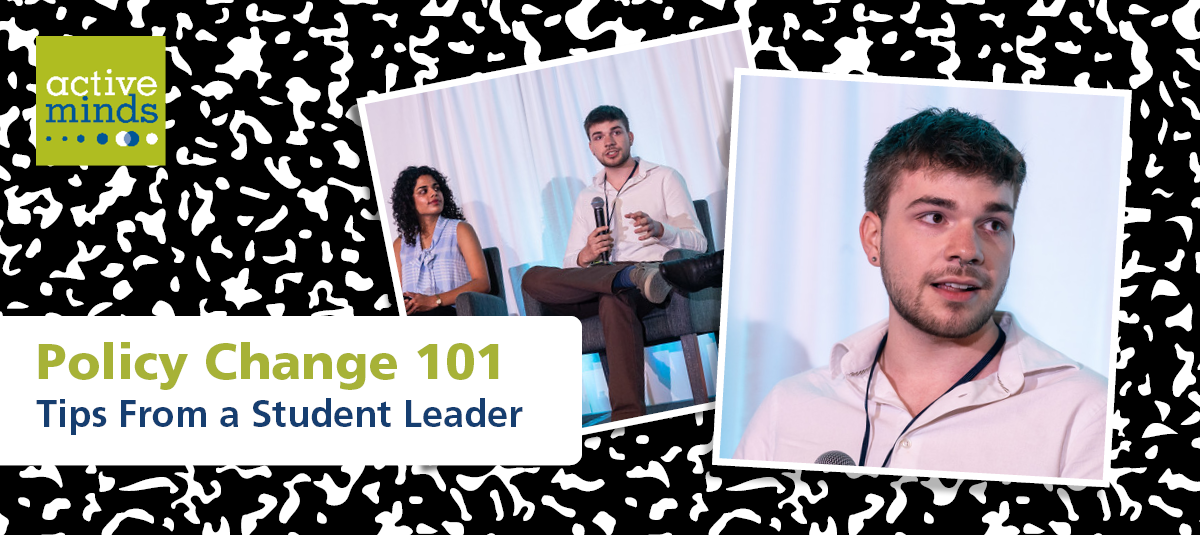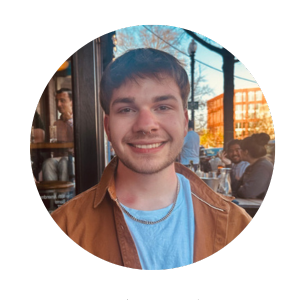From middle to early high school, I struggled with suicidal ideation, depression, disordered eating, and other mental health challenges. I felt especially isolated in my rural community, where conversations about mental health were nonexistent and access to care was limited. I also dealt with the stigma associated with men’s mental health, further complicated by my sexual orientation and queerness. At the time, I thought no one could relate to the issues I faced — and I almost took my life because of it.
Fortunately, at 14, I was able to volunteer with YouthLine, a teen-to-teen crisis line. Though I had no prior experience, the idea of helping others and giving back to my community was enough for me to get involved. For the next four years, I spent three-and-a-half hours each week helping other teens understand and respond to issues in their lives, like academic stress, abuse, sexual assault, and more. In doing so, I soon had the most profound realization of my life: I wasn’t alone in the issues I faced. My mental health challenges were a microcosm of public health issues that affected hundreds of thousands of young people across the world.
I knew then that I had to act — if not for myself, then for the numerous others in my position.
In eleventh grade, I was able to do just that by participating in the Active Minds Your Voice is Your Power Program. There, I created a needs assessment to research demographic disparities in my school’s mental health curriculum and presented the data to students, educators, and administration. I even caught the superintendent’s attention and presented at a district-wide conference.
A year later, I was able to continue my work as part of Active Minds’ inaugural Mental Health Advocacy Academy. I created a framework for a district-wide, student-led task force for better and more equitable mental health education. I then combined efforts with a local suicide prevention partnership to allocate $400,000 for a multilingual mental health navigation service, updated suicide prevention curricula, and new peer support programs in Oregon’s fifth-largest school district.
In a culmination of all these efforts, I testified about the need for better school mental health and adolescent crisis intervention services before the U.S. Senate Committee on Finance at age 17.
Thanks to the skills I learned and my experiences throughout high school, I found a passion for mental and behavioral health policy and have been able to work on these issues at Johns Hopkins University and on a national level.
If, like me, you’re interested in learning how to combat the current youth mental health crisis, there are many ways to get involved based on what resonates most with you. Here are the biggest challenges in mental and behavioral health right now and how youth advocates can take action:
- Not all mental health emergencies receive a mental health response. Even though the 988 Suicide and Crisis Lifeline has made incredible strides for the nation’s crisis intervention and response services, there are still states and territories without a comprehensive crisis continuum. All people experincing a mental health crisis should have someone to call (i.e., crisis counselor), someone to respond (i.e., mobile crisis response team), and a safe place to go (i.e., crisis stabilization center). Advocates can help by urging your state legislator to pass phone and telecommunication taxes for 988, the same as we do for 911.
- There are currently mental health workforce shortages, especially of BIPOC and LGBTQIA+ providers. Too many people live in areas where there aren’t enough mental health professionals. Even fewer options are available for those who wish to see a clinician with a shared identity or lived experience. We need to not only increase wages but also create more professional pipeline programs like the Mental Health Advocacy Academy and YouthLine. After all, If I hadn’t participated in both, I wouldn’t be pursuing the career I am right now.
- The current lack of peer support services in schools and communities must be addressed. Active Minds knows that teens turn to their friends for support and that there can be profound benefits from doing so. Advocates can help by starting an Active Minds Chapter at their school and training as many students as possible on V-A-R®, Active Minds’ everyday tool for everyday conversations about mental health.
As other young people begin their advocacy journey, I want to share the second most profound realization of my life: I wasn’t alone in my advocacy. I found so much strength in the stories and work of others in the Active Minds community. I was even able to rely on them for advice and support. Find those people and lean on them because knowing you’re not alone can change not only your world but also someone else’s.




